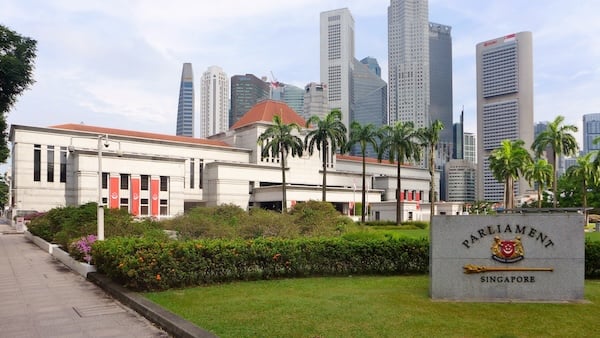SINGAPORE: Singapore’s Parliament resembles an exclusive club with a high bar for admission. Its members are chosen by voters who judge aspirants by deeds, not words. Even the impressive credentials and oratory of the Workers’ Party’s star recruit, Senior Counsel Harpreet Singh, could not wrest Punggol GRC from the grip of the ruling People’s Action Party (PAP).
Deputy Prime Minister Gan Kim Yong, parachuted into the constituency at the last minute, promised voters, “I will talk to my good friend, Finance Minister and Prime Minister Lawrence Wong, to see whether we can get more money for some of this necessary infrastructure for our residents.”
The voters listened — and voted for the PAP, which polled 55.17%, almost 10 percentage points more than the Workers’ Party (WP). We will never know for sure whether that promise swayed the vote in Punggol, but as a rule, people elect politicians who work for them — and that is what makes Singapore’s Parliament so exclusive.
Singaporeans elect MPs based on their track record — what they have done for the community — and that makes it almost impossible for a political party to be elected to Parliament unless it already has a seat in the House. Only parties with elected MPs can demonstrate how they have helped their constituents and improved life in their wards. Opposition parties without elected MPs simply cannot provide that evidence — and that seems to rule them out of serious consideration for election to Parliament.
Singapore now has, in effect, a two-party system, with only the PAP and the WP represented in Parliament. The May 3 polls ended, as usual, in a PAP landslide, and Prime Minister Lawrence Wong had every reason to be pleased, winning his first election as prime minister by a wider margin (65.57%) than his predecessor, Senior Minister Lee Hsien Loong, who won the 2020 elections with 61.23%. But the PAP’s improved numbers didn’t change the ground reality. Nothing changed on the ground. The WP retained all 10 seats it had won in 2020.
That is the second lesson we can draw from the hustings — the near-impossibility of dislodging an incumbent. Reams have been written about the PAP’s iron grip on Singapore. It has been the ruling party since 1959. Only the Chinese Communist Party has ruled longer in Asia. Critics frequently complain of an uneven playing field — an allegation repeated when the electoral boundaries were redrawn ahead of the May 3 elections. Constituencies were reshaped, merged, created, or wiped off the electoral map to reflect shifting demographics, according to the Electoral Boundaries Review Committee, but critics claimed these changes favoured the ruling party. The upshot, however, was a stalemate. Neither the PAP nor the WP managed to wrest any of each other’s seats. The incumbents stayed put.
Admittedly, the WP came close to winning Jalan Kayu SMC and Tampines GRC. But the PAP held on by the narrowest of margins — winning 51.47% of the vote in Jalan Kayu and 52.02% in Tampines.
WP secretary-general Pritam Singh justifiably highlighted the improved performance of his party. Just as the PAP’s vote share increased since 2020, so did the WP’s — from 11.22% to 14.99%. The May 3 elections saw a rise in the fortunes of both the PAP and the WP.
The WP’s gain appears modest compared to the PAP’s, but that’s because those figures reflect nationwide vote shares. The WP contested only eight constituencies, while the PAP canvassed all 33. Naturally, the ruling party’s total vote count was far higher.
Indeed, the PAP had all but won the election when the WP fielded only 23 candidates across eight constituencies. The Progress Singapore Party (PSP) and the Singapore Democratic Party (SDP) were expected to put up a close fight in a few constituencies, but the outcome was never in doubt.
Commentators and netizens who remarked on the calibre of WP candidates surely noted what Pritam Singh himself acknowledged — he lacked the resources to mount a larger campaign. He wasn’t aiming to unseat the government but to keep the opposition alive. In that, he succeeded — and so did PM Wong, who sought a strong mandate from the people to provide effective leadership.
This election has strengthened both the PAP and the WP, leaving the rest of the parties out in the cold. Singapore’s Parliament remains an exclusive club with seats for only two parties, while the others wait disconsolately outside.
That’s how the cookie crumbles in Singapore. Voters judge political parties by their track record, but some parties haven’t even gotten out of the starting gate, having never won a single seat in Parliament.
To their chagrin, it is they who helped the PAP win by a wider margin than in 2020. The PAP secured over 70% or even 80% of the vote in constituencies where it was opposed by other parties, not the WP. In contrast, PAP-WP contests were far closer.
Yes, for all practical purposes, Singapore is evolving into a two-party system. Put it down to the voters — who, like HR managers, are sceptical of candidates without a track record.

